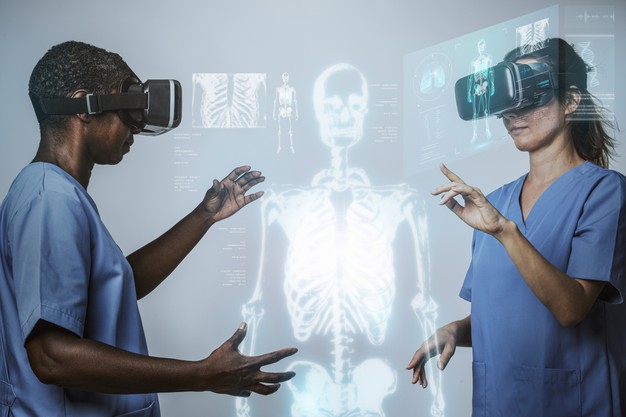Medical Imaging Emerging Trends in 2021
June 20, 2021The acceleration in technological innovation has brought a significant transformation in the medical device industry. It has greatly enhanced the methods of diagnostics and has made the treatment of several medical conditions more efficient and effective. Businesswire suggests that the global market for medical imaging was valued at $39.94 Billion in 2020.
The numbers themselves signify how the demand for medical imaging software and hardware is surging in the current times. Apart from it, several other medical imaging trends show a high growth rate in the healthcare sector. Let us explore more about them in this blog.
Emerging Trends of Medical Imaging in the Healthcare Sector
Chronic diseases are thriving expeditiously. Besides, the rise of the senior population became a catalyst for the growth of the diagnostic imaging market. Some of the ruling trends and technologies of ruling the imaging market as of now are as follows:
Computed Tomography (CT)
CT scan has become a common phrase in our lives now. Using the combo of X-Ray and medical imaging software, pictures of your bones, tissues, and organs are generated. The procedure is simple, painless, and takes significantly less time to conduct.
It is mostly used for:
- Detecting joint and bone tissues, such as tumors and complex bone fractures.
- Identify accumulated blood clots that can result in heart diseases, cancer, or emphysema.
- Finding internal injuries caused by accident.
- Making a treatment plan for conducting a surgery.
Nowadays, CT scanners have become even more advanced. They can capture the pictures that freeze cardiac motion and helps to prevent motion blurs. Also, the radiation exposure is also reduced by a substantial amount.
AI and Neuroimaging
Artificial Intelligence is doing wonders in every sector, and healthcare is no exception. In the neuroimaging field, AI applications are being used to develop triage mechanisms that can detect brain hemorrhage in a patient at an inceptive level.
Also, the technology helps in stroke detection by enabling the software to find large vessel occlusions that can further cause a stroke. The reports are immediately sent to the stroke team so that appropriate action can be taken in time.
Also Read: Comprehending the Dreadful Impacts of COVID-19 on Cardiovascular Treatments
Nuclear Imaging
Despite its several side effects, radiation therapy has benefited different types of neurological medical conditions and cancers. That is why the market for nuclear imaging is surging like fire. The market is expected to grow at a CAGR of 10% between 2016 and 2021.
Cancer patients are increasing worldwide, which projects the need for more imaging devices and software. The most common nuclear imaging equipment used in nuclear imaging are:
- Single-photon emission computed tomography (SPECT).
- Positron emission tomography (PET)
Hybrid Imaging
Computed tomography and magnetic resonance alike imaging technologies such as imaging can clearly see morphologic features (shape and size) in the scan. However, it doesn’t provide any information on inflammation and proliferation.
Thus, for the definitive diagnosis of the problem, doctors require both anatomic and functional data. This is done by hybridizing different imaging technologies and achieving a more sophisticated scan pattern that can clearly detect the problem. Hybrid images can be used for:
- Planning surgical procedures
- Guiding invasive/noninvasive therapeutic interventions.
- Monitor the response of therapy on a patient.
Computer-Aided Design
3D printing or computer-aided designs are one of the newest emerging trends in medical imaging. Their ability to design and produce highly detailed models of human organs and parts makes them suitable for planning complex surgeries.
Using this technology, the medical digital images can be rendered in three-dimension prototypes, and the cases can be studied comprehensively. Some of its main applications are:
- Custom-made prosthetics.
- 3D development of surgical instruments.
- 3D printed models that assist in surgery.
MRI
Magnetic resonance imaging (MRI) technology has been around for a while now and the latest advances in this technology have been on the software side. Various non-invasive technologies are working towards developing techniques and devices that can assess the mechanical properties of tissue.
One such technology is elastography that concerns with the detection of stiffness of body tissues. It works by merging MRI images with sound waves and develops a visual map. The applications can be used in assessing hepatic stiffness and various phases of fibrosis in patients with liver disease.
3D Mammography
It is one of the prevalent breast cancer detection technologies in the field of medical imaging. It focuses on developing 3D reconstruction of the breast tissues. The tissues can then be viewed as sequential slices that help in better examining the denser tissues of the breast.
It is also known as tomosynthesis and is a highly capable technology that can detect minute lung nodules developing inside the body that typically can not be detected using conventional methods.
Magnetic Resonance-Guided Ultrasound
It is an MRI-based therapeutic technique that makes use of ultrasonic pulses to remove the target tissue. Leveraging a thermal imaging system, the body’s temperature is constantly monitored, and accordingly, the treatment is provided to the patient. It is typically used in neurosurgery and the treatment of diseases like Parkinson’s and similar conditions.
Wrapping Up
All the trends suggest that the need for medical imaging in the coming future will undoubtedly see a massive demand. From cath lab software to other medical imaging software, healthcare would require more imaging devices and the software to run them. JVSDicomPlus is a great way to manage all that data effortlessly and guide you to better healthcare.

0 Comments